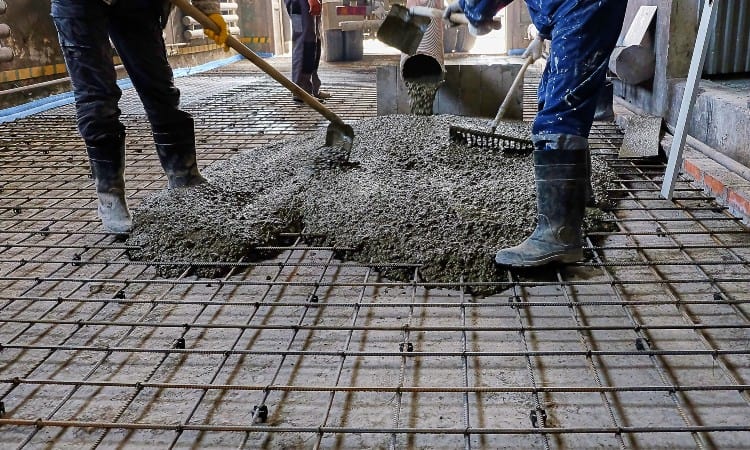Like other building materials, concrete may experience problems over time. These issues could include discolorations, shrinkage and scaling; however, they’re typically simple to manage and resolve.
Cracked Concrete
Though concrete is generally durable material, it still can become damaged over time. Cracked areas in the surface should be addressed promptly in order to minimize further structural issues and further damage.
Surface cracks usually only measure several millimetres wide and typically appear as thin lines or map-like patterns, known as hairline cracks. While they don’t impact the strength of your concrete, they may allow contaminants into it which could further deteriorate it over time.
Cracked concrete can be divided into two broad categories according to their width: structural and non-structural cracks. The former are caused by tensile stresses in concrete and can be reduced with steel reinforcement and larger concrete sections to distribute the load more evenly. On the other hand, non-structural cracks may arise due to factors like stress conditions inherent in the structure, thermal movements, shrinkage, restraint or shrinkage; they can be mitigated using proper mix design, compaction techniques or water control during concreting.
Honeycombing
Concrete honeycombing, also known as honeycombing, occurs when there are holes or voids on the surface of concrete that resemble bee’s nests. It most frequently affects footings, walls and columns and occurs when concrete mix doesn’t flow evenly when being poured into a casing or formwork; this leads to air voids forming under reinforcement bars as a result.
Concrete slabs Melbourne has long been used as part of home and business construction. From driveways to foundations and parking lots, concrete provides durable functionality while adding aesthetic beauty.
Honeycombing of concrete may result from poor workability, incorrect pouring technique, or overwatering the mixture. Lack of vibration or tamping during the concrete process may also contribute to this issue; more aggregate than required sizes prevent concrete from filling the narrow spaces between coarse aggregates.
As soon as concrete honeycombing becomes apparent, it should be addressed immediately in order to prevent further structural damage. Chemical or vacuum grouting offers a quick way to repair it; they ensure all honeycombed areas are filled in with concrete mix and aggregate for safe usage again after grouting has taken place.
Discolored Concrete
Mishandled concrete pours can lead to discoloration. From dark blotches here and there to non-uniform color throughout a slab, discoloration is unsightly and typically comes from material inconsistency, cement alternatives or poor workmanship; other factors like weather and curing processes could also play a part.
Preventing discoloration in new concrete can be accomplished easily by making sure materials used meet industry standards and convening a meeting between materials providers, mixing plant operator, and flatwork company to discuss all aspects of a project beforehand. Maintaining consistent moisture levels by not over trowelling will also aid in maintaining even color distribution across your slab.
If the issue is minor, flushing and scrubbing with hot water may help remove darker patches in your concrete surface. If more serious, using a solution of 1-3% muriatic acid could even out the coloring.
Scaling
Concrete is one of the most durable building materials available, yet it still requires care for optimal performance. Left unattended, damage to concrete can seriously diminish its value and structural stability, so homeowners need to keep an eye out for signs such as surface cracking and disintegration so professional concrete contractors can address them immediately.
Surface cracking can often be traced back to freeze-thaw cycles or poor construction practices, with surface or hairline cracks appearing either across an entire slab, in an irregular grid pattern, or even as disintegration (when air-entrapped concrete mixes are exposed to acidic chemicals that cause the cement paste to dehydrate), leaving behind aggregates in its wake. Disintegration occurs when air-entrained mixes come into contact with water and chemicals which dissolve the cement paste and leave behind aggregates – an issue known as disintegration can happen when air-entrapment can happen when air-entrained concrete mixes are exposed to acidic chemicals which cause disintegration (incorporation). Disintegration results when air-entrained concrete mixes come into contact with water and acidic chemicals – leaving behind aggregates behind.
However, this problem can be avoided through using concrete mix designs that provide for appropriate aggregate gradation and water-cement ratios; by shortening mixing times to prevent air bubbles forming in the concrete; and vibrating properly during placement.

